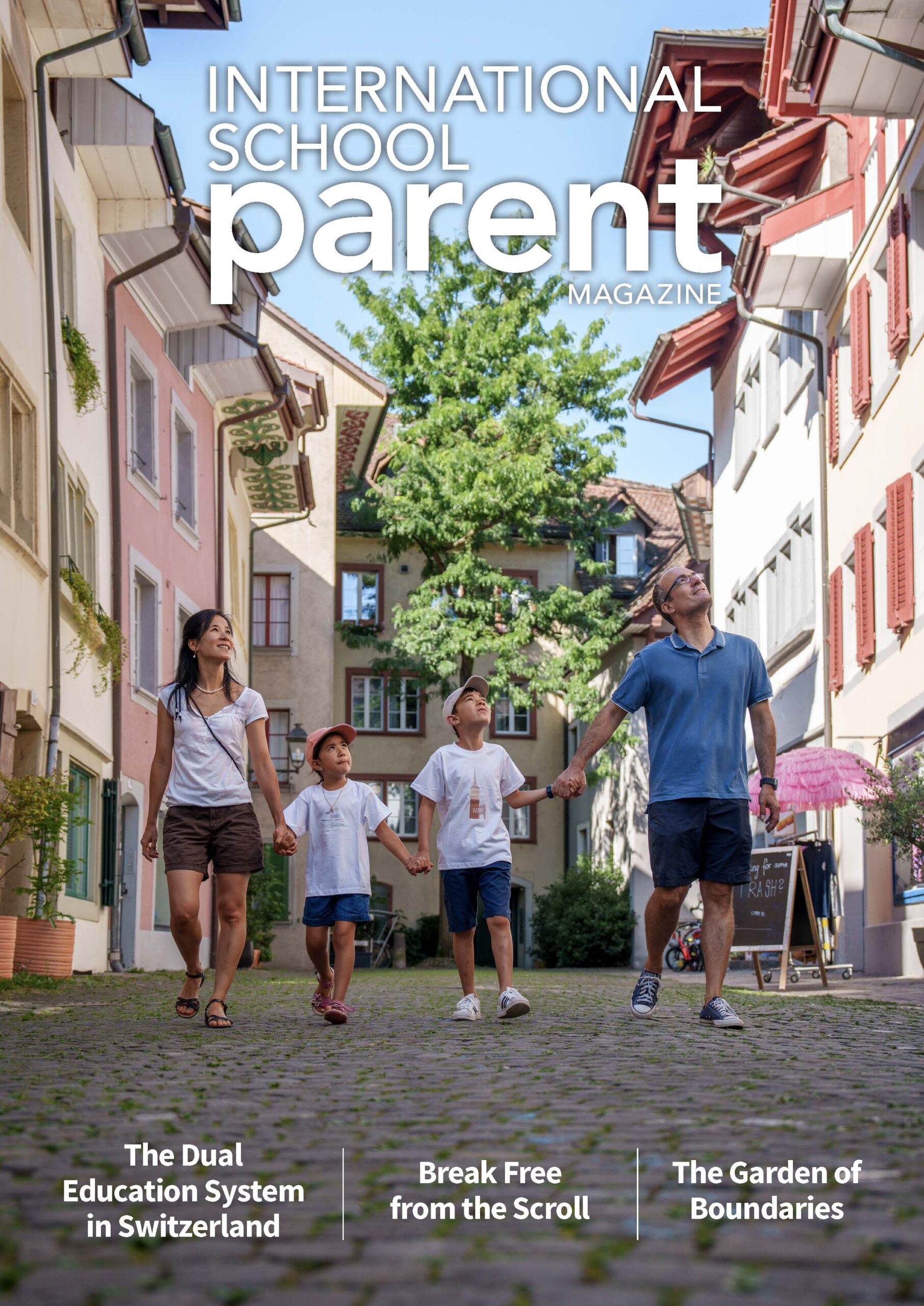Supporting LGBTQ+ Youth Through Big Moves and New Schools: The Ultimate Parent’s Guide

By Cath Brew
Moving to a new country, home and starting at a new school can be both an exciting and daunting experience for any child. For young LGBTQ+ people, these moves can be even more challenging due to concerns about acceptance, finding supportive peers, and navigating unfamiliar social environments. As a parent, your guidance and support are crucial in ensuring that your LGBTQ+ child feels safe, loved, and empowered during these changes.
The key to supporting your child is knowing what to look out for in advance of your move. It allows you to ask questions, pre plan and think about what is best for your family.
For LGBTQ+ children, the most common concerns, and questions about moving internationally include:
• Loss of safe space at school (teachers, friends, and affirming social clubs)
• Are we moving to a less inclusive country?
• Will I now have to hide that I am LGBTQ+?
• Travelling through airports and security means public scrutiny of my identity and body (passports, body scanners and pat downs)
• Only one of my parents knows that I am LGBTQ+ (what if the other wants to move to a less inclusive country? I may need to tell them before I am ready)
• Can I register at the new school as my affirmed gender from day one?
• Is the new school uniform gendered? Will I have to wear a skirt when I need trousers?
• Going ‘home’ sucks as my extended family are not affirming of my gender/sexuality
• Will I find friends who accept me?
• Will I meet other LGBTQ students?
• Is the new country’s language gendered? E.g. Does it include ‘they/them’ pronouns?
There are a multitude of other questions, which may also weigh on your child’s mind. From the first moment that you tell them you are moving again, they will be full of thoughts and emotions.
Here are 8 practical things you can do to support your LGBTQ+ child as you navigate your big move!
1. Open Communication and Reassurance
A move can bring uncertainty, so maintaining open and honest communication with your child is key. Encourage them to express their feelings, whether they are excited, anxious, or anything in between. Validate their emotions and reassure them that you will support them every step of the way.
Tips:
• Have regular check-ins to discuss any concerns.
• Truly listen to their fears, especially if your country choices are not LGBTQ+ affirming.
• Acknowledge and consider any fears while highlighting the potential positives of the move.
• Share stories of resilience to encourage and inspire confidence.
2. Educate Yourself about LGBTQ+ Rights in that Country
Do not rely on what you have heard from others. Conduct your own research. LGBTQ+ rights around the world vary enormously and are changing all the time. A country that was once safe, may not be any longer, and vice versa.
Where to Look:
• Search online for: ‘LGBTQ+ rights for [insert country name]’.
• Visit www.equaldex.com. Whilst much of Equaldex relates to life as an adult, it provides a good indication of the national attitude towards LGBTQ+ people and the legal structure in which you will find yourself.
• Email organisations like ILGA (International Lesbian, Gay, Bisexual, Trans, and Intersex Association) to ask about the reality of LGBTQ+ life in a particular country.

3. Research LGBTQ+ Resources in the New Community
Before moving, research the LGBTQ+ support systems in your new area. Many schools and communities have resources that provide safe spaces for LGBTQ+ youth to connect with peers and mentors.
What to Look For:
• LGBTQ+ student organisations e.g. Gender-Sexuality Alliance (GSA).
• Inclusive school policies that protect against discrimination.
• LGBTQ+ youth centres or support groups outside of school.
• Consider online LGBTQ+ communities if it is not safe or legal in your country (use a virtual private network for extra safety).
• Affirming healthcare providers and therapists.
4. Ask about a Safe and Inclusive School Environment
Your child’s school should be a place where they feel safe and respected. Connect with school administrators to ensure they have inclusive policies that support LGBTQ+ students. Given that many international schools operate within countries where being LGBTQ+ is not safe, their inclusion policies may not be on their website. This does not mean that they are not inclusive as sometimes, discretion is necessary.
Steps to Take:
• Ask about LGBTQ+ inclusivity in the curriculum and student activities.
• Read the school’s inclusion policies (anti- bullying, LGBTQ+, gendered spaces).
• Find out if there is a GSA or similar group in the school.
• Investigate if there are gender-neutral facilities (toilets, change rooms, camps).
• Ask whether teachers and staff receive diversity and inclusion training.
5. Help Your Child Find their Community
Making friends in a new school can be intimidating, but finding a supportive community is essential for your child’s well- being. Encourage them to explore clubs, sports, or activities that align with their interests and identity.
Ways to Connect:
• Encourage your child to join the school’s GSA. If there isn’t one, ask the school if they will start one.
• See if your child wants help talking to the school or friends about being LGBTQ+.
• If possible and safe, attend local LGBTQ+ events or meetups.
• Foster connections with affirming peers and their parents.

6. Encourage Self-Expression and Confidence
Depending on which country you move to, changing to a new place may be an opportunity for your child to embrace their authentic self-more openly. Support their choices in expressing their gender identity and sexual orientation in a way that feels right to them.
How to Support:
• Allow them to experiment with their style and self-presentation.
• Use their chosen name and pronouns consistently.
• Celebrate their identity and achievements.
7. Prepare for Challenges and Have a Plan
Unfortunately, not every environment is fully accepting of LGBTQ+ people. It is important to prepare your child for potential challenges and to give them strategies to navigate difficult situations.
Coping Strategies:
• Role-play responses to discrimination or ignorance.
• Help them identify safe spaces and supportive staff at school.
• Reinforce their self-worth and remind them they are not alone.
• Consider split location living if life in the new country is not compatible with being LGBTQ+ and your child has become distressed.
8. Take Care of Your Own Wellbeing
Supporting your child requires emotional strength, and your wellbeing is just as important. Seek out parent support groups, LGBTQ+ education resources, and counselling if needed.
Self-Care Tips:
• Connect with other parents of LGBTQ+ children.
• Invest time and energy into your own relationship for your emotional needs.
• Educate yourself on LGBTQ+ topics to understand your child more.
• Practice stress-relief techniques and set healthy boundaries.
Relocating to a new country and school is a significant change in a child’s life, and your love and support can make all the difference. By being aware of the potential challenges, staying engaged, advocating for inclusivity, and fostering a strong support system, you help your LGBTQ+ child to build confidence and resilience in their new environment. Every step you take together strengthens their sense of belonging and reassures them that they are cherished exactly as they are.

